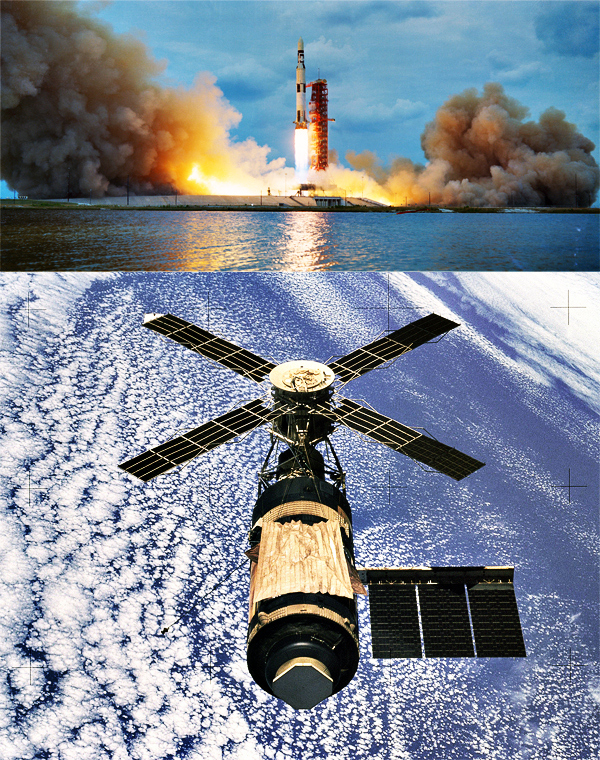
Skylab launched on November 16, 1973
The Night of Broken Glass: Skylab, America’s first space station, is successfully launched into an orbit around the earth. Eleven days later, U.S. astronauts Charles Conrad, Joseph Kerwin, and Paul Weitz made a rendezvous with Skylab, repairing a jammed solar panel and conducting scientific experiments during their 28-day stay aboard the space station.
The first manned Skylab mission came two years after the Soviet Union launched Salynut 1, the world’s first space station, into orbit around the earth. However, unlike the ill-fated Salynut, which was plagued with problems, the American space station was a great success, safely housing three separate three-man crews for extended periods of time and exceeding pre-mission plans for scientific study.
Originally the spent third stage of a Saturn 5 moon rocket, the cylinder space station was 118 feet tall, weighed 77 tons, and carried the most varied assortment of experimental equipment ever assembled in a single spacecraft to that date. The crews of Skylab spent more than 700 hours observing the sun and brought home more than 175,000 solar pictures. They also provided important information about the biological effects of living in space for prolonged periods of time.
Five years after the last Skylab mission, the space station’s orbit began to deteriorate faster than expected, owing to unexpectedly high sunspot activity. On July 11, 1979, the parts of the space station that did not burn up in the atmosphere came crashing down on Australia and into the Indian Ocean. No one was injured.
History Channel / Wikipedia / Encyclopedia Britannica / NASA
/ Skylab launched on November 16, 1973 (YouTube search) 
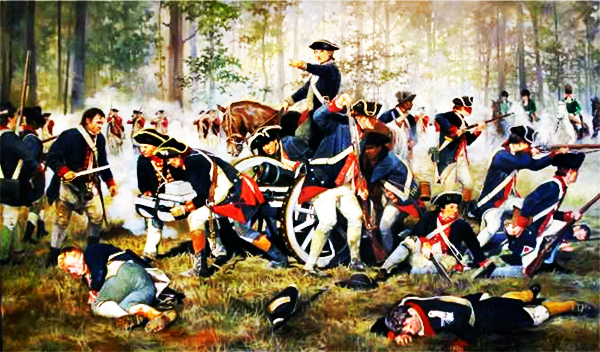
Fort Washington Is Captured on November 16, 1776
Fort Washington Is Captured: On this day in 1776, Hessian Lieutenant General Wilhelm von Knyphausen and a force of 3,000 Hessian mercenaries and 5,000 Redcoats lay siege to Fort Washington at the northern end and highest point of Manhattan Island.
Throughout the morning, Knyphausen met stiff resistance from the Patriot riflemen inside the fort, but by afternoon, the Patriots were overwhelmed, and the garrison commander, Colonel Robert Magaw, surrendered. Nearly 3,000 Patriots were taken prisoner, and valuable ammunition and supplies were lost to the Hessians. The prisoners faced a particularly grim fate: Many later died from deprivation and disease aboard British prison ships anchored in New York Harbor.
Among the 53 dead and 96 wounded Patriots were John and Margaret Corbin of Virginia. When John died in action, his wife Margaret took over his cannon, cleaning, loading and firing the gun until she too was severely wounded. The first woman known to have fought for the Continental Army, Margaret survived, but lost the use of her left arm.
Two weeks earlier, one of Magaw’s officers, William Demont, had deserted the Fifth Pennsylvania Battalion and given British intelligence agents information about the Patriot defense of New York, including details about the location and defense of Fort Washington. Demont was the first traitor to the Patriot cause, and his treason contributed significantly to Knyphausen’s victory.
Fort Washington stood at the current location of Bennet Park in the Washington Heights neighborhood of New York City, near the George Washington Bridge, at the corner of Fort Washington Avenue and 183rd Street. Fort Washington Park and Fort Washington Point lay beneath the site along the Hudson River.
History Channel / Wikipedia / Encyclopedia Britannica /Civil War.org / British Battles
/ Battle of Fort Washington (YouTube search) 
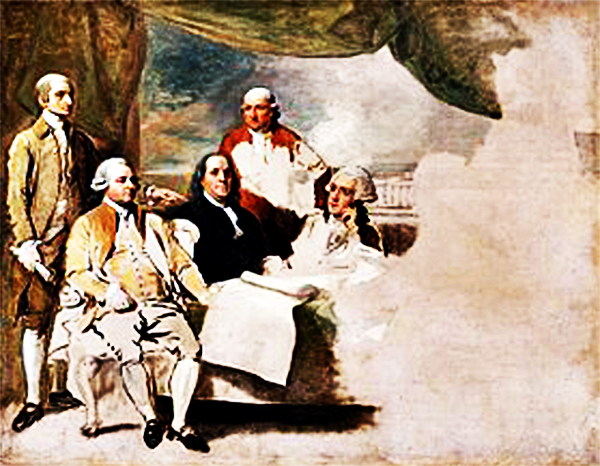
Preliminary Treaty of Paris is signed on November 30, 1782
Preliminary Treaty of Paris is signed: On this day in history, November 30, 1782, the preliminary Treaty of Paris is signed, bringing the hostilities of the American Revolution to a close. The British government became more disposed to achieving peace with the Americans after the surrender of General Charles Lord Cornwallis and the loss of several of its possessions to France and Spain.
The United States was prevented from dealing directly with Great Britain due to its alliance with France, having promised that it would not negotiate with Britain without them. Nonetheless, messages were exchanged between Ben Franklin in Paris and Prime Minister, Lord Shelburne's peace commissioner in Paris, Richard Oswald, seeking common ground on which a preliminary peace could be formed.
The United States demanded full recognition by Britain as a sovereign nation, removal of British troops from its territory and fishing rights off Newfoundland. At first, Britain wanted the United States to remain as British possessions, but with greater autonomy. This was rejected by Ben Franklin, who wanted all of Canada for the United States as part of the deal. Britain rejected this proposal.
The negotiations continued in secret and John Jay and John Adams joined Ben Franklin. Due to the exposure of some secret meetings between Britain and France and to his distrust of the French, John Jay, began negotiating directly with the British, against the wishes of Franklin and unbeknownst to France. Formal talks began in September and the remaining difficulties were ironed out over the next two months.
Two days after America's 4th peace commissioner, Henry Laurens, arrived, a preliminary agreement was signed on November 30, 1782, which recognized the United States and established its boundaries, roughly being from the Mississippi to the Atlantic and from the Great Lakes to Florida. The preliminary Treaty of Paris also granted the United States the right to fish off Newfoundland and granted both Britain and the United States the right to use the Mississippi River.
Congress was to “earnestly recommend” to the states that they refund any property taken from Loyalists during the war and creditors on both sides were given full rights to recover all debts. Prisoners were to be released on both sides and all American property was to be left undamaged by British troops when they left.
The preliminary Treaty of Paris was ratified by Parliament on January 20, 1783 and by Congress on April 15. A ceasefire was declared by Britain on February 4 and by America on April 11th. The final official Treaty of Paris was signed by the commissioners on September 3, 1783, ratified by Congress on January 14, 1784 and by Great Britain on April 9, 1784. The ratified documents were exchanged once and for all in Paris on May 12, 1784, bringing the American Revolution to an end.
Revolutionary War and Beyond / Wikipedia / Encyclopedia Britannica /Library Of Congress / History Channel
/ Preliminary Treaty of Paris is signed on November 30, 1782 (YouTube search) 
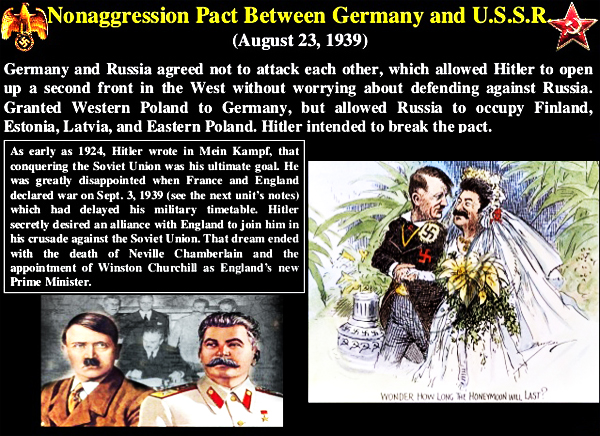
USSR attacks Finland on November 30, 1939
USSR attacks Finland: On this day in 1939, the Red Army crosses the Soviet-Finnish border with 465,000 men and 1,000 aircraft. Helsinki was bombed, and 61 Finns were killed in an air raid that steeled the Finns for resistance, not capitulation.
The overwhelming forces arrayed against Finland convinced most Western nations, as well as the Soviets themselves, that the invasion of Finland would be a cakewalk. The Soviet soldiers even wore summer uniforms, despite the onset of the Scandinavian winter; it was simply assumed that no outdoor activity, such as fighting, would be taking place. But the Helsinki raid had produced many casualties-and many photographs, including those of mothers holding dead babies, and preteen girls crippled by the bombing. Those photos were hung up everywhere to spur on Finn resistance. Although that resistance consisted of only small numbers of trained soldiers-on skis and bicycles!–fighting it out in the forests, and partisans throwing Molotov cocktails into the turrets of Soviet tanks, the refusal to submit made headlines around the world.
President Roosevelt quickly extended $10 million in credit to Finland, while also noting that the Finns were the only people to pay back their World War I war debt to the United States in full. But by the time the Soviets had a chance to regroup, and send in massive reinforcements, the Finnish resistance was spent. By March 1940, negotiations with the Soviets began, and Finland soon lost the Karelian Isthmus, the land bridge that gave access to Leningrad, which the Soviets wanted to control.
History Channel / Wikipedia / Encyclopedia Britannica /Uralica / The Atlantic
/ Finland WWII in color 1939 (YouTube search) 
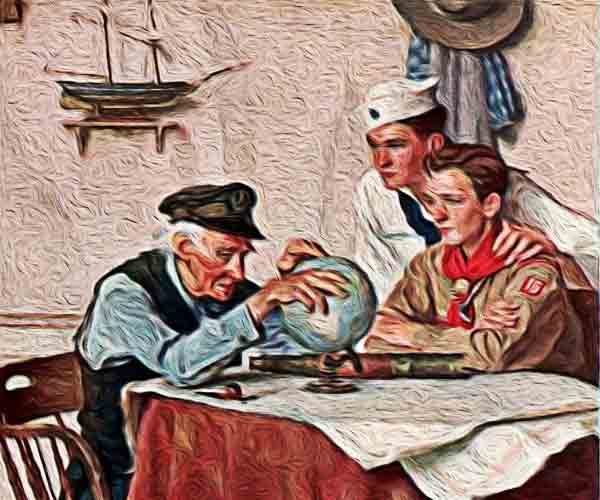
Understanding Military Terminology
Repairable Item
(DOD) An item that can be reconditioned or economically repaired for reuse when it becomes unserviceable.
Joint Publications (JP 4-05) Joint Mobilization Planning - Intelligence
Render Safe Procedures
(DOD) The portion of the explosive ordnance disposal procedures involving the application of special explosive ordnance disposal methods and tools to provide for the interruption of functions or separation of essential components of unexploded explosive ordnance to prevent an unacceptable detonation
Joint Publications (JP 3-15.1) Counter-Improvised Explosive Device
Rendezvous Area
(DOD) In an amphibious operat ion, the area in which the landing craft and amphibious vehicles rendezvous to form waves after being lo aded, and prior to movement to the line of departure.
Joint Publications (JP 3-02) Amphibious Operations
Joint Publication - Department of Defense Dictionary of Military and Associated Terms
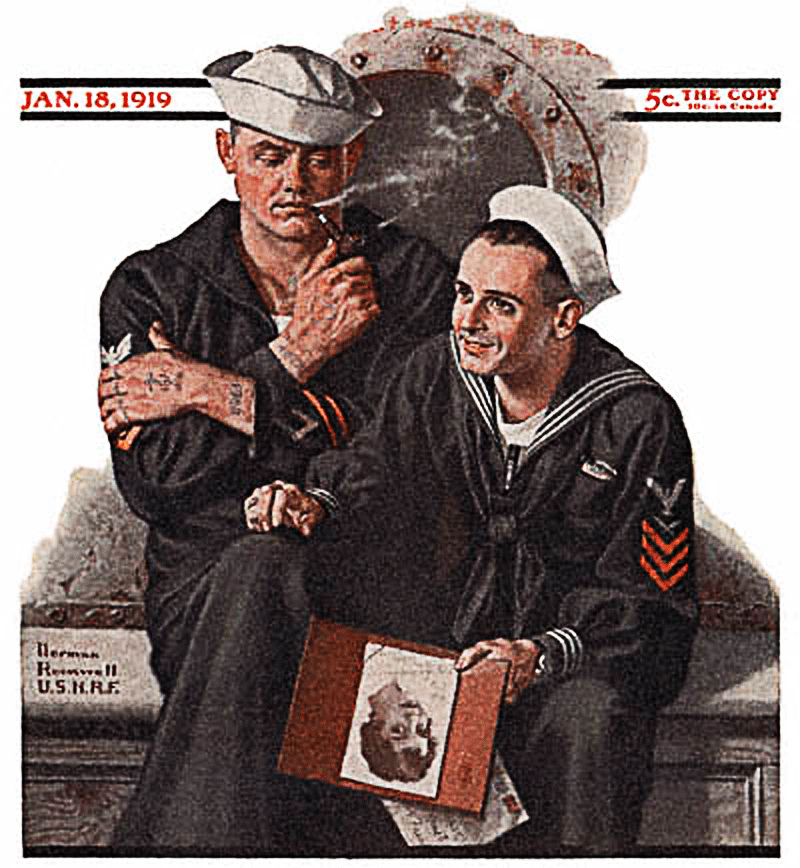
The Old Salt’s Corner
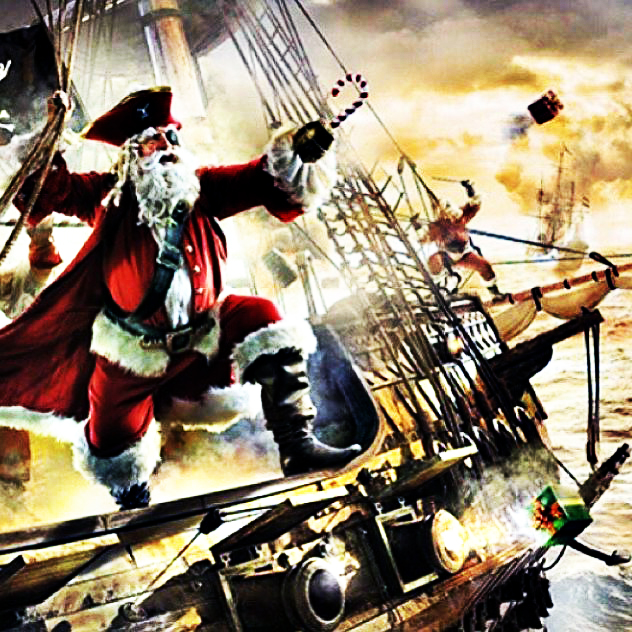
“SAILOR'S CHRISTMAS”
“Signed: Fair Winds S.C. Clause BMCM (Retired)”
Twas the night before Christmas a calm night at sea
We nestled in our racks for a Holiday Routine
When from the ventilation there came such a clatter
We jumped from our bunks to see what's the matter.
When from the vent fell this big dust covered dude
He was dressed up in red with a bad attitude
Yelling, “Those ducts are all filthy!” as he brushed off his clothes.
“Don't just damn stand there, where's the DCPO?”
He arose form the deck, then he peered all around.
Then from his mouth came a bellowing sound
“This berthing's a disgrace!” then he called us by name
“Now Boatswain, Now Corpsman, please explain!”
This was not the Santa I remembered from youth
He smelled of cheap whiskey, he was rough and uncouth
“Now, look here you bastards” he said as he strolled
“You'd best trice this place up, or you'll get nothing but coal!”
“You'll make this space pretty, military, and neat!”
Then he looked down at our boots that lay right near his feat
“Well, what do we have here?” He said with a frown
“Who the hell polished these? Recruit 'Buster brown'?!”
He walked around slowly, he missed not a mark
He even spotted dust bunnies, right there in the dark!
“You've got high dust and low dust, and that overhead it needs cleaning!”
We all stood dumbfounded as his words kept on streaming
“Which man here is senior!?” Then asked St Nick
“You'd better shit me and answer…and SHIT ME ONE QUICK!”
The First Class stepped forward, his heart pounding hard.
“Now look right here shitbirds, this asshole's in charge!”
“These racks will be tight! This damn deck it will shine!
I don't want to hear bitching! I need not hear you whine!”
So we gathered our foxtales, our buckets, and swabs
We all worked all in silence to finish the job.
It took almost an hour finish our space
He just sat drinking coffee and stuffing his face
Then on re-inspection he explained with a huff
“Now this is more like it! Now your not so screwed up!”
We all stood there smiling, awaiting our gifts
But Santa just snapped out “What's the matter dumb-shits!?”
“Get back to your racks! This will be my last warning!
Just like on shore, the gifts come in the morning!”
It seemed like eternity until reveille sounded
We threw back our curtains as all our hearts pounded
But what were our gifts? For what did we suffer?
A pallet of rags and a shiny new buffer!
Attached to our new buffer, we found a short note
We all gathered round to see what he wrote
“Next year at Christmas, best have all your shit wired!”
~ Signed: Fair Winds S.C. Clause BMCM (Retired)

“I’m Just Sayin”
“Time is the only critic without ambition.s”
“The discipline of the written word punishes both stupidity and dishonesty.”
“Writers are a little below clowns and a little above trained seals.”
“Give a critic an inch, he'll write a play.”
“Ideas are like rabbits.
You get a couple and learn how to handle them,
and pretty soon you have a dozen.”
“Power does not corrupt.
Fear corrupts...
perhaps the fear of a loss of power.”
“A sad soul can kill you quicker,
far quicker,
than a germ.”
“Man is the only kind of varmint sets his own trap,
baits it,
then steps in it.”
~ John Steinbeck

“Thought for the Day”
“A democratic government is the only one in which those who vote for a tax can escape the obligation to pay it.
“Life is to be entered upon with courage.”
“History is a gallery of pictures in which there are few originals and many copies.”
“In youth and beauty, wisdom is but rare!”
“All those who seek to destroy the liberties of a democratic nation ought to know that war is the surest and shortest means to accomplish it.”
“Liberty cannot be established without morality,
nor morality without faith.”
“The greatness of America lies not in being more enlightened than any other nation,
but rather in her ability to repair her faults.”
“The main business of religions is to purify, control, and
restrain that excessive and exclusive taste for well-being which men acquire in times of equality.”
“In a revolution,
as in a novel,
the most difficult part to invent is the end.”
~ Alexis de Tocqueville

“What I Learned”
“The only thing necessary for the triumph of evil is for good men to do nothing.”
“The greater the power, the more dangerous the abuse.”
“All tyranny needs to gain a foothold is for people of good conscience to remain silent.”
“You can never plan the future by the past.”
“Our patience will achieve more than our force.”
“Good order is the foundation of all things.”
“The first and simplest emotion which we discover in the human mind, is curiosity.”
“Liberty cannot be established without morality,
It is the greatest of all possible evils;
for it is folly, vice, and madness,
Iwithout tuition or restraint.”
“People crushed by laws,
have no hope but to evade power.
If the laws are their enemies,
they will be enemies to the law;
and those who have most to hope and nothing to lose will always be dangerous.”
~ Edmund Burke
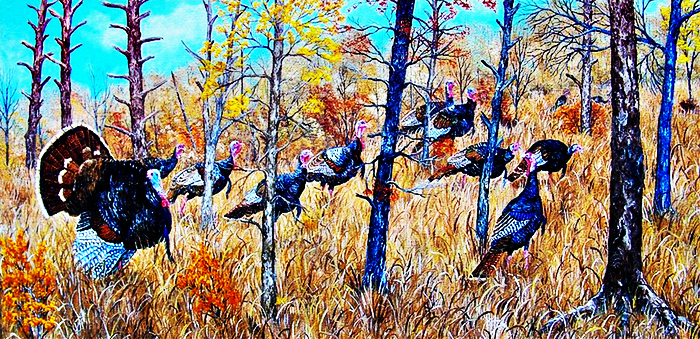
Mr. Answer Man Please Tell Us: Thanksgiving 2022
Thanksgiving Day is a national holiday in the United States, and Thanksgiving 2022 occurs on Thursday, November 24. In 1621, the Plymouth colonists and Wampanoag Indians shared an autumn harvest feast that is acknowledged today as one of the first Thanksgiving celebrations in the colonies. For more than two centuries, days of thanksgiving were celebrated by individual colonies and states. It wasn’t until 1863, in the midst of the Civil War, that President Abraham Lincoln proclaimed a national Thanksgiving Day to be held each November.
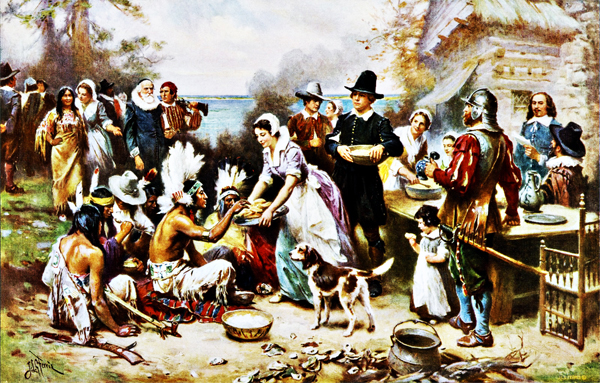
Thanksgiving at Plymouth
In September 1620, a small ship called the Mayflower left Plymouth, England, carrying 102 passengers—an assortment of religious separatists seeking a new home where they could freely practice their faith and other individuals lured by the promise of prosperity and land ownership in the New World.
After a treacherous and uncomfortable crossing that lasted 66 days, they dropped anchor near the tip of Cape Cod, far north of their intended destination at the mouth of the Hudson River. One month later, the Mayflower crossed Massachusetts Bay, where the Pilgrims, as they are now commonly known, began the work of establishing a village at Plymouth.
Did you know? Lobster, seal and swans were on the Pilgrims' menu.
Throughout that first brutal winter, most of the colonists remained on board the ship, where they suffered from exposure, scurvy and outbreaks of contagious disease. Only half of the Mayflower’s original passengers and crew lived to see their first New England spring.
In March, the remaining settlers moved ashore, where they received an astonishing visit from an Abenaki Indian who greeted them in English. Several days later, he returned with another Native American, Squanto, a member of the Pawtuxet tribe who had been kidnapped by an English sea captain and sold into slavery before escaping to London and returning to his homeland on an exploratory expedition. Squanto taught the Pilgrims, weakened by malnutrition and illness, how to cultivate corn, extract sap from maple trees, catch fish in the rivers and avoid poisonous plants. He also helped the settlers forge an alliance with the Wampanoag, a local tribe, which would endure for more than 50 years and tragically remains one of the sole examples of harmony between European colonists and Native Americans.
In November 1621, after the Pilgrims’ first corn harvest proved successful, Governor William Bradford organized a celebratory feast and invited a group of the fledgling colony’s Native American allies, including the Wampanoag chief Massasoit.
Now remembered as American’s “first Thanksgiving” - although the Pilgrims themselves may not have used the term at the time—the festival lasted for three days. While no record exists of the historic banquet’s exact menu, the Pilgrim chronicler Edward Winslow wrote in his journal that Governor Bradford sent four men on a “fowling” mission in preparation for the event, and that the Wampanoag guests arrived bearing five deer. Historians have suggested that many of the dishes were likely prepared using traditional Native American spices and cooking methods. Because the Pilgrims had no oven and the Mayflower’s sugar supply had dwindled by the fall of 1621, the meal did not feature pies, cakes or other desserts, which have become a hallmark of contemporary celebrations.
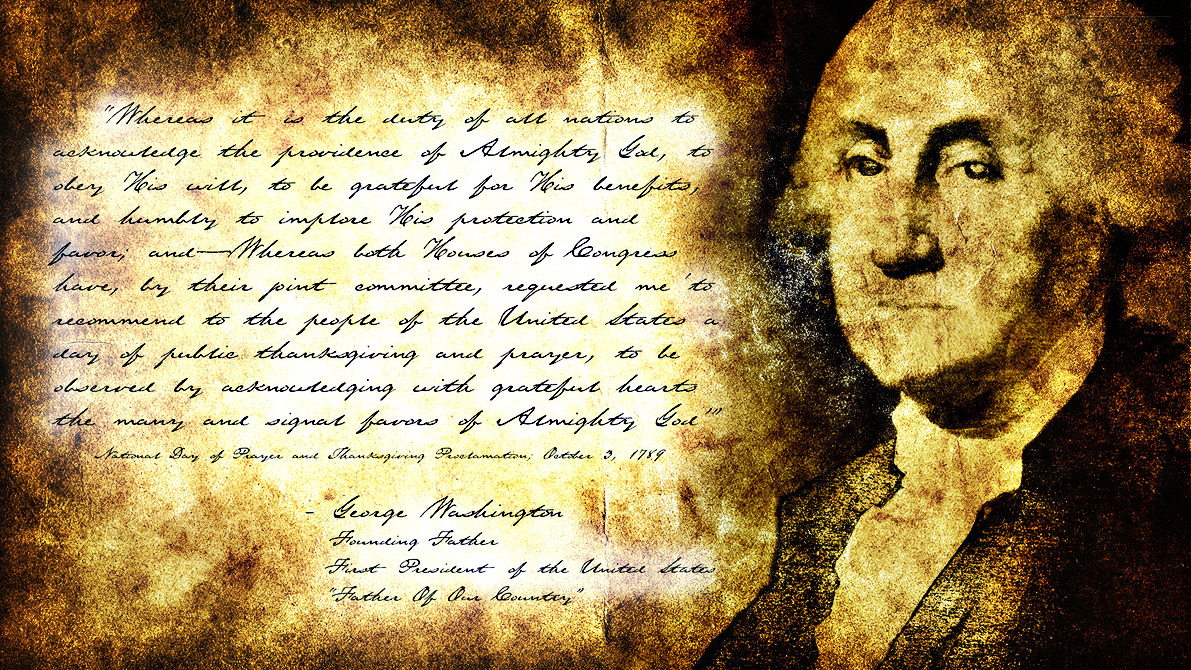
Thanksgiving Becomes an Official Holiday
Pilgrims held their second Thanksgiving celebration in 1623 to mark the end of a long drought that had threatened the year’s harvest and prompted Governor Bradford to call for a religious fast.
Days of fasting and thanksgiving on an annual or occasional basis became common practice in other New England settlements as well. During the American Revolution, the Continental Congress designated one or more days of thanksgiving a year, and in 1789 George Washington issued the first Thanksgiving proclamation by the national government of the United States;
in it, he called upon Americans to express their gratitude for the happy conclusion to the country’s war of independence and the successful ratification of the U.S. Constitution. His successors John Adams and James Madison also designated days of thanks during their
In 1817, New York became the first of several states to officially adopt an annual Thanksgiving holiday; each celebrated it on a different day, however, and the American South remained largely unfamiliar with the tradition. In 1827, the noted magazine editor and prolific writer Sarah Josepha Hale—author, among countless other things, of the nursery rhyme “Mary Had a Little Lamb”—launched a campaign to establish Thanksgiving as a national holiday.
For 36 years, she published numerous editorials and sent scores of letters to governors, senators, presidents and other politicians. Abraham Lincoln finally heeded her request in 1863, at the height of the Civil War, in a proclamation entreating all Americans to ask God to “commend to his tender care all those who have become widows, orphans, mourners or sufferers in the lamentable civil strife” and to “heal the wounds of the nation.” He scheduled Thanksgiving for the final Thursday in November, and it was celebrated on that day every year until 1939, when Franklin D. Roosevelt moved the holiday up a week in an attempt to spur retail sales during the Great Depression. Roosevelt’s plan, known derisively as Franksgiving, was met with passionate opposition, and in 1941 the president reluctantly signed a bill making Thanksgiving the fourth Thursday in November.
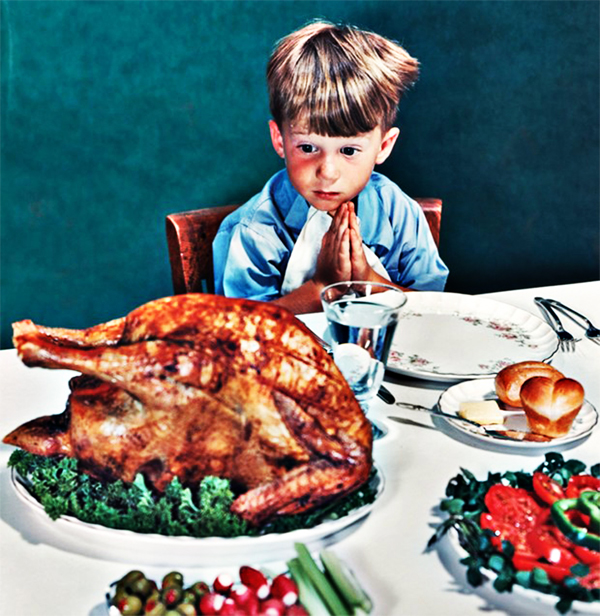
Thanksgiving Traditions
In many American households, the Thanksgiving celebration has lost much of its original religious significance; instead, it now centers on cooking and sharing a bountiful meal with family and friends. Turkey, a Thanksgiving staple so ubiquitous it has become all but synonymous with the holiday, may or may not have been on offer when the Pilgrims hosted the inaugural feast in 1621. Today, however, nearly 90 percent of Americans eat the bird - whether roasted, baked or deep-fried - on Thanksgiving, according to the National Turkey Federation. Other traditional foods include stuffing, mashed potatoes, cranberry sauce and pumpkin pie. Volunteering is a common Thanksgiving Day activity, and communities often hold food drives and host free dinners for the less fortunate.
Parades have also become an integral part of the holiday in cities and towns across the United States. Presented by Macy’s department store since 1924, New York City’s Thanksgiving Day parade is the largest and most famous, attracting some 2 to 3 million spectators along its 2.5-mile route and drawing an enormous television audience. It typically features marching bands, performers, elaborate floats conveying various celebrities and giant balloons shaped like cartoon characters.
Beginning in the mid-20th century and perhaps even earlier, the president of the United States has “pardoned” one or two Thanksgiving turkeys each year, sparing the birds from slaughter and sending them to a farm for retirement. A number of U.S. governors also perform the annual turkey pardoning ritual.
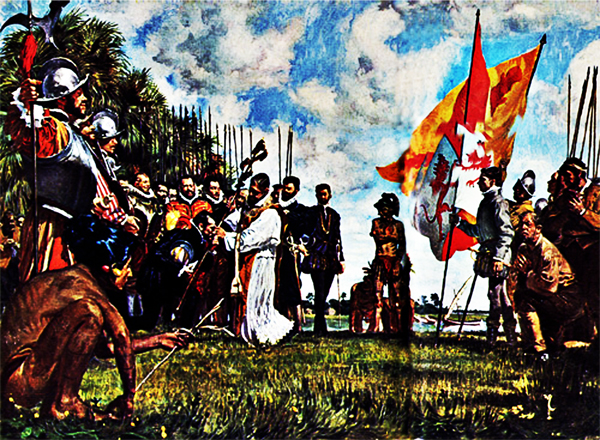
Thanksgiving Controversies
For some scholars, the jury is still out on whether the feast at Plymouth really constituted the first Thanksgiving in the United States. Indeed, historians have recorded other ceremonies of thanks among European settlers in North America that predate the Pilgrims’ celebration. In 1565, for instance, the Spanish explorer Pedro Menéndez de Avilé invited members of the local Timucua tribe to a dinner in St. Augustine, Florida, after holding a mass to thank God for his crew’s safe arrival. On December 4, 1619, when 38 British settlers reached a site known as Berkeley Hundred on the banks of Virginia’s James River, they read a proclamation designating the date as “a day of thanksgiving to Almighty God”.
Some Native Americans and others take issue with how the Thanksgiving story is presented to the American public, and especially to schoolchildren. In their view, the traditional narrative paints a deceptively sunny portrait of relations between the Pilgrims and the Wampanoag people, masking the long and bloody history of conflict between Native Americans and European settlers that resulted in the deaths of millions. Since 1970, protesters have gathered on the day designated as Thanksgiving at the top of Cole’s Hill, which overlooks Plymouth Rock, to commemorate a “National Day of Mourning”. Similar events are held in other parts of the country.
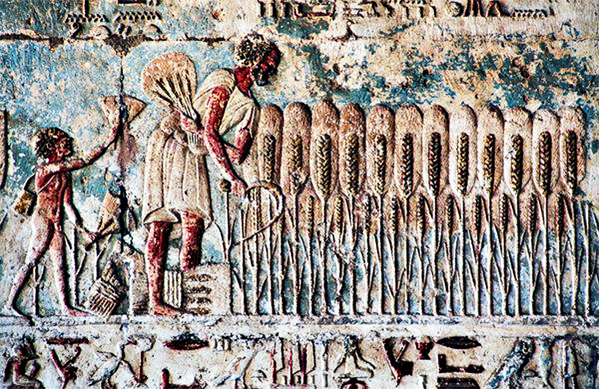
Thanksgiving’s Ancient Origins
Although the American concept of Thanksgiving developed in the colonies of New England, its roots can be traced back to the other side of the Atlantic. Both the Separatists who came over on the Mayflower and the Puritans who arrived soon after brought with them a tradition of providential holidays - days of fasting during difficult or pivotal moments and days of feasting and celebration to thank God in times of plenty.
As an annual celebration of the harvest and its bounty, moreover, Thanksgiving falls under a category of festivals that spans cultures, continents and millennia. In ancient times, the Egyptians, Greeks and Romans feasted and paid tribute to their gods after the fall harvest. Thanksgiving also bears a resemblance to the ancient Jewish harvest festival of Sukkot. Finally, historians have noted that Native Americans had a rich tradition of commemorating the fall harvest with feasting and merrymaking long before Europeans set foot on their shores.
History Channel
• National Geographic
• Quara
• Thanksgiving
• Wikipedia

NAVSPEAK aka U.S. Navy Slang
Wheels: A Quartermaster (QM).
Wheel Book: Green covered pocket-sized government issue notebook carried by most Petty Officers and Chiefs.
Whidbey Whale: A dependent wife that is Orca fat even though her husband has maintained the same basic size during their marriage.
Whistling Shit Can of Death: CH-46 Seaknight Helicopter, described as such because of the whistling sound the engines make, and because the CH-46 has been prone to failures, and has killed its share of air crews.
White Rats: Tampons which appear after a sewage leak in the female head. Also, a sound powered telephone amplifier.
Whiz Quiz: “Piss Test”, urinalysis.
Widow/Widower: Describes wives (and now husbands) with spouses on deployment. Single, for all intents and purposes, until the day their spouse returns from deployment. Prefaced by the type or theater of service the deployed spouse is in, e.g. “WESTPAC widow” or “Boomer Widow”.
Wings: Naval Aviator or Naval Flight Officer breast insignia. Also the Enlisted Aviation Warfare Specialist breast insignia.
Wing-nut: See airdale.
Wire Biter: An electrician.
Wizzard: Topsider insult for a nuc. Refers to nucs' insistance to dress like Morpheus from the Matrix and propensity for playing Magic (The Gathering) and World of Warcraft endlessly.
Wiktionary.org

Just for you MARINE
Whiskey Locker: Supply locker/closet.
Winger: White Phosphorus munition, whether in grenade, mortar, artillery, or aerial bomb form, so named from the pre-1956 phonetic alphabet letters “William” and “Peter”.
Wilco: Voice procedure term shortened from “Will Comply”.
Willie Pete Bag: Waterproof bag.
Wikipedia.org
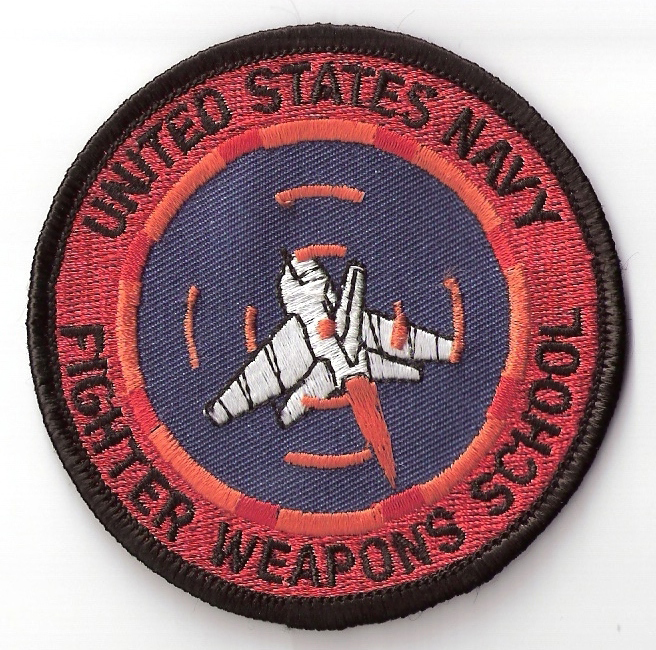
Naval Aviation Squadron Nicknames
U.S. Navy Fighter Weapons School Naval Aviation Squadron Nicknames: “TOPGUN”
United States Navy - Naval Air Station Fallon - Near Fallon, Nevada
Wikipedia.org

Where Did That Saying Come From?
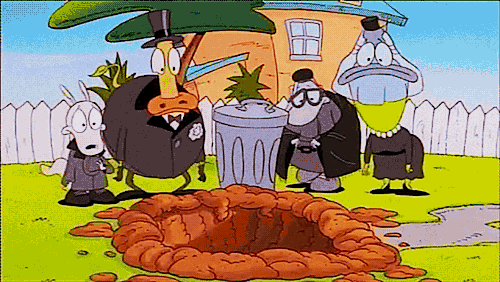
“Ashes to Ashes, Dust to Dusts:”
Meaning: The phrase 'ashes to ashes' expresses the notion that we come from dust and we return to dust.
Origin: 'Ashes to ashes' derives from the English Burial Service. The text of that service is adapted from the Biblical text, Genesis 3:19 (King James Version):
“In the sweat of thy face shalt thou eat bread, till thou return unto the ground; for out of it wast thou taken: for dust thou art, and unto dust shalt thou return.”
The 1662 version of the Book of Common Prayer indicated the manner and text of the burial service:
“Then, while the earth shall be cast upon the Body by some standing by, the Priest shall say,”
“Forasmuch as it hath pleased Almighty God of his great mercy to take unto himself the soul of our dear brother here departed, we therefore commit his body to the ground; earth to earth, ashes to ashes, dust to dust; in sure and certain hope of the Resurrection to eternal life, through our Lord Jesus Christ; who shall change our vile body, that it may be like unto his glorious body, according to the mighty working, whereby he is able to subdue all things to himself.”
The term has been used frequently in literature and song lyrics. Ashes to Ashes is the title of a 2009 BBC television series.
It was also used as a song title by David Bowie in 1980, which included one of his best-known lyrics:
“Ashes to ashes, funk to funky
We know Major Tom's a junkie”
Phrases.org UK

Science & Technology
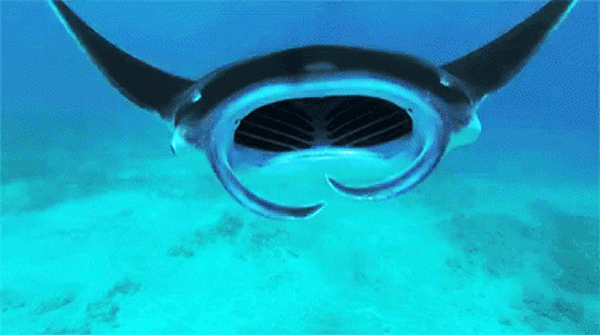
Komodo National Park is home to some of the world's largest manta ray aggregations, study shows
• Astronomers spot quadruple stars that may spark supernova explosions
How dragonflies right themselves when dropped upside down
• What producers of Star Wars movies are getting wrong about androids
• Sea ice can control Antarctic ice sheet stability, new research finds
Simultaneous broadband image sensing and convolutional processing using van der Waals heterostructures
• Circuit model may explain how deep brain stimulation treats Parkinson's disease symptoms
• Smart pacifier developed to monitor infant health in the hospital
COVID-19, MIS-C and Kawasaki disease share same immune response
• Online sentiment about vaccines previews later vaccination rates, new Twitter study finds
• Ultrathin fuel cell uses the body's own sugar to generate electricity
Phys.org / MedicalXpress / TechXplore
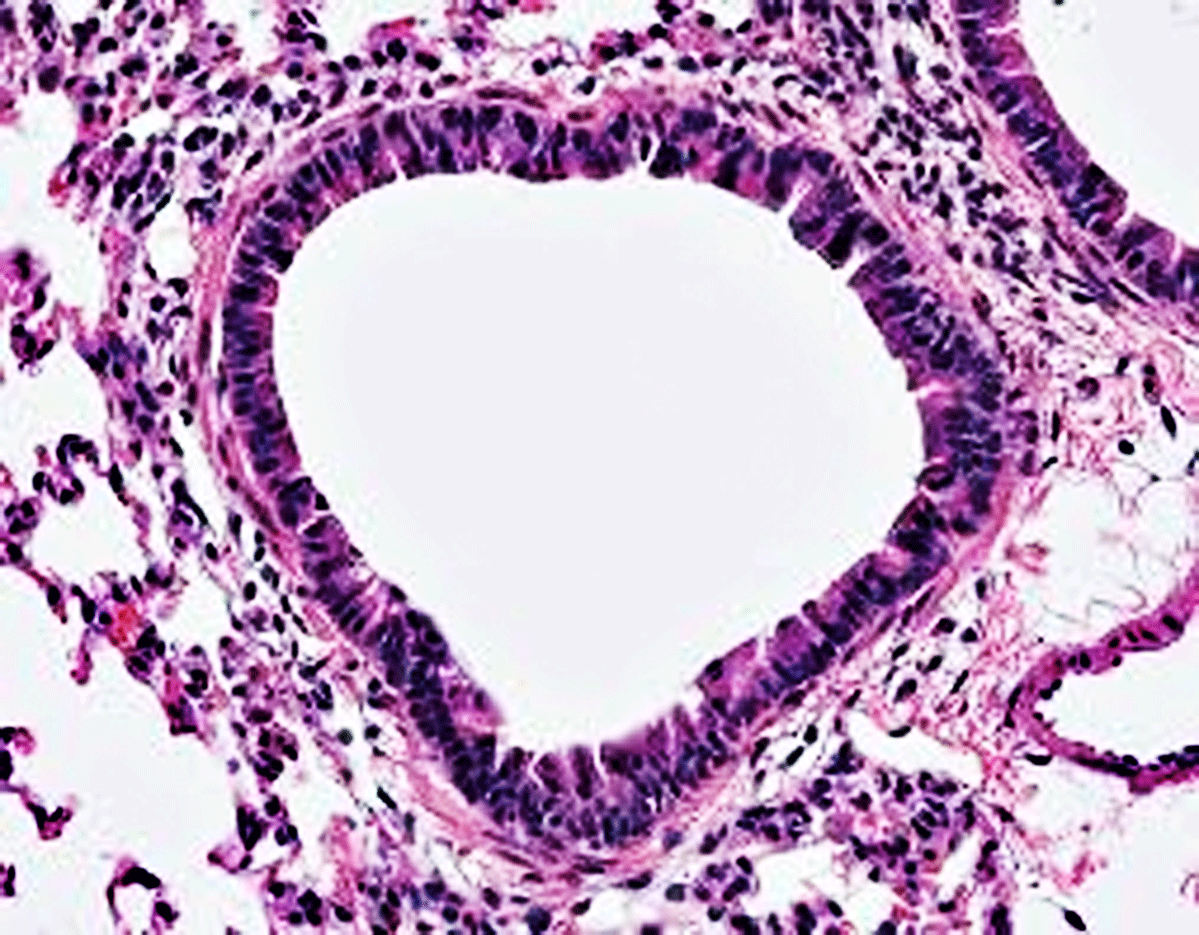
FEATURED: Epithelial cells initiate macrophage-mediated repairs
• Global shifts in tidal wetlands
Striking color display in invasive chameleons
• Are forensic experts biased? Scientist’s claims spark outrage
Shadow of Milky Way’s giant black hole seen for the first time
• When it comes to scorpions, it’s the small ones you need to watch out for
Watch coral reefs “eat” using conveyer belts made of mucus
• Atmospheric waves and global seismoacoustic observations of the January 2022 Hunga eruption, Tonga
Science AAAS

Bizarre News (we couldn’t make up stuff this good - real news story)
Why haven't we cloned a human yet?
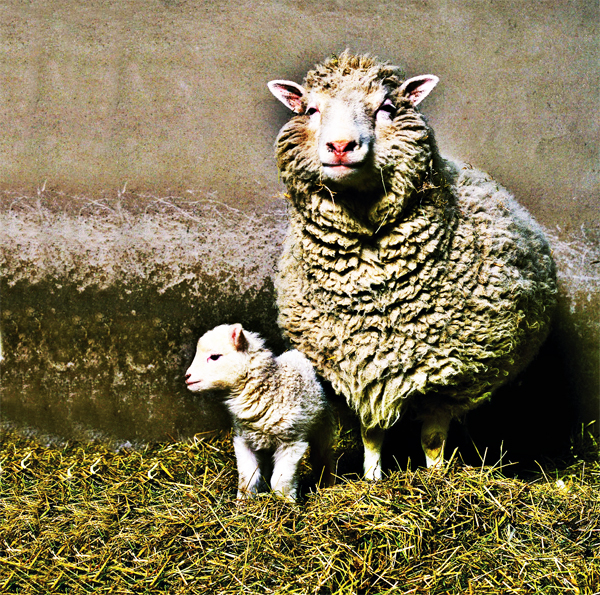
Is it for ethical reasons or are there technological barriers?
In 1996, Dolly the sheep made headlines around the world after becoming the first mammal to be successfully cloned from an adult cell. Many commentators thought this would catalyze a golden age of cloning, with numerous voices speculating that the first human clone must surely be just a few years away.
Some people suggested that human clones could play a role in eradicating genetic diseases, while others considered that the cloning process could, eventually, eliminate birth defects (despite research by a group of French scientists in 1999 finding that cloning may actually increase the risk of birth defects).
There have been various claims - all unfounded, it is important to add — of successful human cloning progams since the success of Dolly. In 2002, Brigitte Boisselier, a French chemist and devout supporter of Raëlism - a UFO religion based on the idea that aliens created humanity - claimed that she and a team of scientists had successfully delivered the first cloned human, whom she named Eve.
However, Boisselier was unwilling — or indeed unable — to provide any evidence, and so it is widely believed to be a hoax.
So why, almost 30 years on from Dolly, haven't humans been cloned yet? Is it primarily for ethical reasons, are there technological barriers, or is it simply not worth doing?
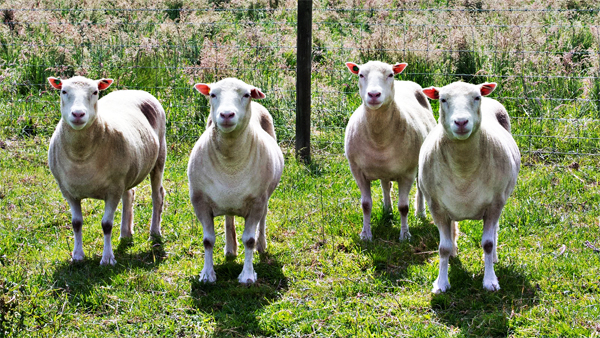
“Cloning“ is a broad term, given it can be used to describe a range of processes and approaches, but the aim is always to produce “genetically identical copies of a biological entity”, according to the National Human Genome Research Institute (NHGRI).
Any attempted human cloning would most likely utilize “reproductive cloning” techniques - an approach in which a “mature somatic cell”, most probably a skin cell, would be used, according to NHGRI. The DNA extracted from this cell would be placed into the egg cell of a donor that has “had its own DNA-containing nucleus removed”.
The egg would then begin to develop in a test tube before being “implanted into the womb of an adult female”, according to NHGRI.
However, while scientists have cloned many mammals, including cattle, goats, rabbits and cats, humans have not made the list.
“I think there is no good reason to make [human] clones”, Hank Greely, a professor of law and genetics at Stanford University who specializes in ethical, legal and social issues arising from advances in the biosciences, told Live Science in an email.
“Human cloning is a particularly dramatic action, and was one of the topics that helped launch American bioethics”, Greely added.
The ethical concerns around human cloning are many and varied. According to Britannica, the potential issues encompass “psychological, social and physiological risks”. These include the idea that cloning could lead to a “very high likelihood” of loss of life, as well as concerns around cloning being used by supporters of eugenics. Furthermore, according to Britannica, cloning could be deemed to violate “principles of human dignity, freedom and equality”.
In addition, the cloning of mammals has historically resulted in extremely high rates of death and developmental abnormalities in the clones, Live Science previously reported.
Another core issue with human cloning is that, rather than creating a carbon copy of the original person, it would produce an individual with their own thoughts and opinions.
“We've all known clones - identical twins are clones of each other - and thus we all know that clones aren't the same person”, Greely explained.
A human clone, Greely continued, would only have the same genetic makeup as someone else - they would not share other things such as personality, morals or sense of humor: these would be unique to both parties.
People are, as we well know, far more than simply a product of their DNA. While it is possible to reproduce genetic material, it is not possible to exactly replicate living environments, create an identical upbringing, or have two people encounter the same life experiences.
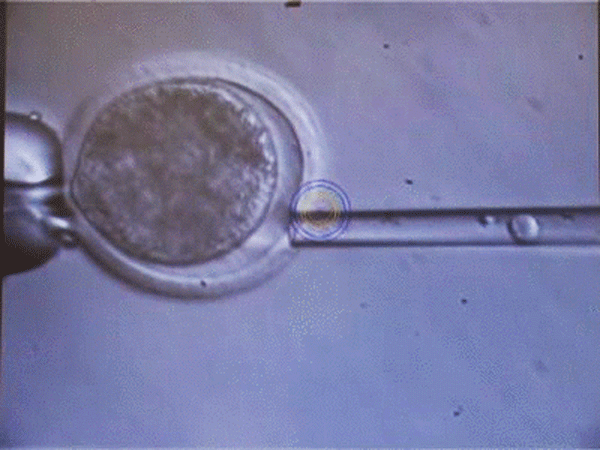
Would cloning humans have any benefits?
So, if scientists were to clone a human, would there be any benefits, scientific or otherwise?
“There are none that we should be willing to conside”, Greely said, emphasizing that the ethical concerns would be impossible to overlook.
However, if moral considerations were removed entirely from the equation, then “one theoretical benefit would be to create genetically identical humans for research purposes”, Greely said, though he was keen to reaffirm his view that this should be thought of as “an ethical non-starter.”
Greely also stated that, regardless of his own personal opinion, some of the potential benefits associated with cloning humans have, to a certain degree, been made redundant by other scientific developments.
“The idea of using cloned embryos for purposes other than making babies, for example producing human embryonic stem cells identical to a donor's cells, was widely discussed in the early 2000s”, he said, but this line of research became irrelevant - and has subsequently not been expanded upon - post-2006, the year so-called induced pluripotent stem cells (iPSCs) were discovered. These are “adult” cells that have been reprogrammed to resemble cells in early development.
Shinya Yamanaka, a Japanese stem cell researcher and 2012 Nobel Prize winner, made the discovery when he “worked out how to return adult mouse cells to an embryonic-like state using just four genetic factors”, according to an article in Nature. The following year, Yamanaka, alongside renowned American biologist James Thompson, managed to do the same with human cells.
When iPSCs are “reprogrammed back into an embryonic-like pluripotent state”, they enable the “development of an unlimited source of any type of human cell needed for therapeutic purposes”, according to the Center of Regenerative Medicine and Stem Cell Research at the University of California, Los Angeles.
“Therefore, instead of using embryos, "we can effectively do the same thing with skin cells”, Greely said.
“This development in iPSC technology essentially rendered the concept of using cloned embryos both unnecessary and scientifically inferior.”
Nowadays, iPSCs can be used for research in disease modeling, medicinal drug discovery and regenerative medicine, according to a 2015 paper published in the journal Frontiers in Cell and Developmental Biology.
Additionally, Greely also suggested that human cloning may simply no longer be a “sexy” area of scientific study, which could also explain why it has seen very little development in recent years.
He pointed out that human germline genome editing is now a more interesting topic in the public's mind, with many curious about the concept of creating "super babies," for example. Germline editing, or germline engineering, is a process, or series of processes, that create permanent changes to an individual’s genome. These alterations, when introduced effectively, become heritable, meaning they will be handed down from parent to child.
Such editing is controversial and yet to be fully understood. In 2018, the Council of Europe Committee on Bioethics, which represents 47 European states, released a statement saying that
“ethics and human rights must guide any use of genome editing technologies in human beings”, adding that “the application of genome editing technologies to human embryos raises many ethical, social and safety issues, particularly from any modification of the human genome which could be passed on to future generations.”
However, the council also noted that there is "strong support" for using such engineering and editing technologies to better understand “the causes of diseases and their future treatment”, noting that they offer “considerable potential for research in this field and to improve human health.”
George Church, a geneticist and molecular engineer at Harvard University, supports Greely's assertion that germline editing is likely to garner more scientific interest in the future, especially when compared with “conventional” cloning.
“Cloning-based germline editing is typically more precise, can involve more genes, and has more efficient delivery to all cells than somatic genome editing”, he told Live Science.
However, Church was keen to urge caution, and admitted that such editing has not yet been mastered.
“Potential drawbacks to address include safety, efficacy and equitable access for all”, he concluded.
Related: What are the alternatives to animal testing?
What is the most genetically diverse species?
Live Science (04/25/2022) 


SONG FACTS
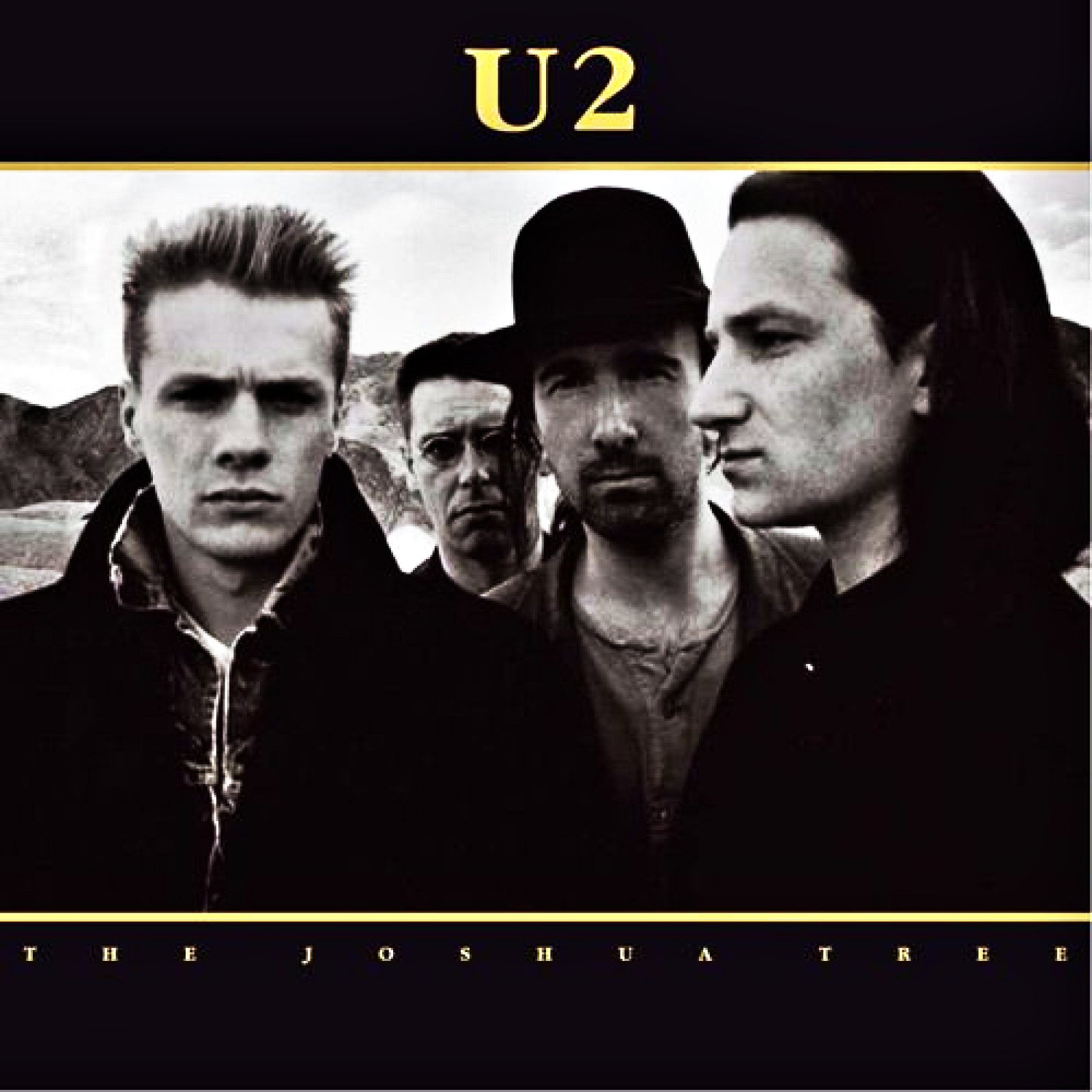
“I Still Haven't Found What I'm Looking For” - U2
Album: The Joshua Tree
Released 1987 
The lyrics could refer to a search for spiritual enlightenment or a search for love. In an interview with Rolling Stone magazine, Bono said the song was “an anthem of doubt more than faith.”
The Edge came up with the title and melody, and Bono wrote lyrics around it.
This was influenced by gospel music. Bono wanted The Joshua Tree to explore various forms of American music they had encountered while touring there. The album's co-producer Daniel Lanois said he nudged Bono in the gospel direction on tracks like this one. He explained in the TV documentary Classic Albums: U2 The Joshua Tree:
“I've always liked gospel music and I encouraged Bono to take it to that place. It was a very non-U2 thing to do at the time, to go up the street of gospel. I think it opened a door for them, to experiment with that territory... He's singing at the top of his range and there is something very compelling about somebody pushing themselves. It's like hearing Aretha Franklin almost. It jumps on you and you can't help but feel the feeling.”
Bono has written a variety of “spiritual” songs. This one makes distinct references to Jesus:
“I believe in the kingdom... you broke the bonds and you loosed the chains” he is acknowledging salvation and yet he still hasn't found what he is looking for. This need for deeper fulfillment and futile search corresponds to a setback in the cycle of faith. The setback of Inferiority is followed by Confusion. Rather than getting back onto the path towards a better faith, another setback occurs. The frustration of the first setback grows, causing confusion and a distorted perspective.
The Edge (Q Magazine, December 1998)
“We were listening to some gospel during The Joshua Tree sessions - I remember The Mighty Clouds and the Reverend Cleveland and The Staple Singers.
The original was more loose, almost Jamaican. Bono hit on the melody and I had the title in a notebook. At first, no one took it that seriously because it sounded so unlike anything we'd ever done and it didn't gel until the mix, but when it was finished we all realized that we had something special. The reviewers didn't like it though. One American said it was a pale imitation of the original form and that Foreigner song
‘I Want to Know What Love Is’  ) was better.”
) was better.”
Bono sometimes introduced this as “A kind of gospel song with a restless spirit.”
The gospel choir The New Voices Of Freedom covered this. When U2 heard their version, they arranged to rehearse it with them in their Harlem church, which led to the performance in Madison Square Garden included on Rattle And Hum. This version was released as a single.
The video, directed by Barry_Devlin
(“Pride, In The Name Of Love”  )
features U2 walking around Fremont Street in downtown Las Vegas and interacting with passersby.
Bono even smooches a couple fans (this was before social distancing) and climbs on the hood of a car to speak to its driver. According to Pat Christenson, president of Las Vegas Events, the clip boosted Sin City's credibility in the music scene. “The whole perception of Vegas changed with that video”, Christenson told Las Vegas Review Journal. “Now all the big names come here, some of them five, six times a year.” >
)
features U2 walking around Fremont Street in downtown Las Vegas and interacting with passersby.
Bono even smooches a couple fans (this was before social distancing) and climbs on the hood of a car to speak to its driver. According to Pat Christenson, president of Las Vegas Events, the clip boosted Sin City's credibility in the music scene. “The whole perception of Vegas changed with that video”, Christenson told Las Vegas Review Journal. “Now all the big names come here, some of them five, six times a year.” >
“I Still Haven't Found What I'm Looking For”  won the Grammy for Best Rock Performance by a Duo or Group in 1988. Their bass player, Adam Clayton, missed the presentation because he was in the bathroom.
won the Grammy for Best Rock Performance by a Duo or Group in 1988. Their bass player, Adam Clayton, missed the presentation because he was in the bathroom.
Several other musicians filmed videos on Fremont Street, including:
The Flaming Lips
(“Do You Realize??”  ),
Ice Cube
(“Chrome And Paint”
),
Ice Cube
(“Chrome And Paint”  ),
The Weeknd
(“Heartless, Blinding Lights”
),
The Weeknd
(“Heartless, Blinding Lights”  ), and
), and
In 1991, a group called Negativland released a single called “U2”, which was a parody of this. They were sued by Island Records and forced to pull the record.
The working title was “Under The Weather”.
A cover version by The Chimes hit #6 in England.
On an episode of Late Night with Conan O'Brien, U2 took part in Conan's comedy bit “Celebrity Secrets” where they joked that one time the band was in a grocery store and could not find the cereal Boo Berry and that was the inspiration for this song.
This was used in the movies “Runaway Bride ”(1999) and “Ricki And The Flash” (2015). It was also used on “Glee” in the 2014 episode “City Of Angels”.
The nu metal band Disturbed covered this on their 2010 album, Asylum.
A joint version by Scarlett Johansson and Bono soundtracked a trailer for the animated film
“Sing 2”  . Bono plays a rock star lion named Clay Calloway in the movie.
. Bono plays a rock star lion named Clay Calloway in the movie.
Continued ...
MORE SONGS
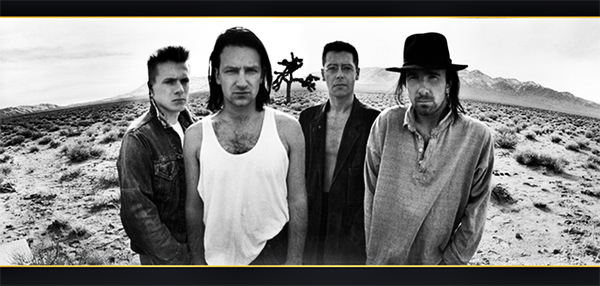
1980
“I Will Follow”  Video
Video  Live
Live 
“The Electric Co.”  Video
Video  Live
Live 
1981
“Gloria”  Video
Video  Live
Live 
1983
“Sunday Bloody Sunday”  Video
Video  Live
Live 
“New Year’s Day”  Video
Video  Live
Live 
1984
“Pride (In the Name of Love)”  Video
Video  Live
Live 
“A Sort of Homecoming”  Video
Video  Live
Live 
“Bad”  Video
Video  Live
Live 
1987
“I Will Follow”  Video
Video  Live
Live 
“Bullet the Blue Sky”  Video
Video  Live
Live 
“Where the Streets Have No Name”  Video
Video  Live
Live 
1988
“Desire”  Video
Video  Live
Live 
1991
“One”  Video
Video  Live
Live 
“Mysterious Ways”  Video
Video  Live
Live 
“Who’s Gonna Ride Your Wild Horses”  Video
Video  Live
Live 
1993
“Lemon”  Video
Video  Live
Live 
“Stay (Faraway, So Close!)”  Video
Video  Live
Live 
1995
“Hold Me, Thrill Me, Kiss Me, Kill Me”  Video
Video  Live
Live 
1997
“Staring at the Sun”  Video
Video  Live
Live 
“Until the End of the World”  Video
Video  Live
Live 
2000
“Beautiful Day”  Video
Video  Live
Live 
“Elevation”  Video
Video  Live
Live 
2009
“Beautiful Day”  Video
Video  Live
Live 
2017
“You’re The Best Thing About Me”  Video
Video  Live
Live 
“I Still Haven't Found What I'm Looking For” - U2 1987 Continued ...
U2, official website (U2 Discography) / Rock & Roll Hall of Fame / Billboard / All Music / Song Facts /
Ultimate Classic Rock / U2
Image: “The Joshua Tree (Album)” by U2
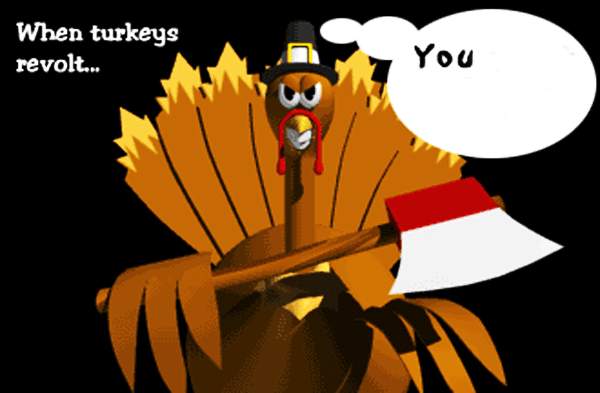
Trivia
● What year was the celebration that is most commonly considered to be the first Thanksgiving?
Answer to Trivia
● How long did the first Thanksgiving celebration last?
Answer to Trivia
● Under which president did Thanksgiving become an annual holiday?
Answer to Trivia
● In what decade did both the Macy’s Thanksgiving Day Parade and America’s Thanksgiving Parade start?
Answer to Trivia
● How do both Macy’s Thanksgiving Day Parade and America’s Thanksgiving Parade conclude?
Answer to Trivia
● Which president was the first to give a turkey a presidential pardon?
Answer to Trivia
Thanksgiving - Fact or Fiction
Fiction: In 1863, President Abraham Lincoln designated the last Thursday in November as a national day of thanksgiving. in 1939, after a request from the National Retail Dry Goods Association, President Franklin Roosevelt decreed that the holiday should always be celebrated on the fourth Thursday of the month (and never the occasional fifth, as occurred in 1939) in order to extend the holiday shopping season by a week.
Fact: In a letter to his daughter sent in 1784, Benjamin Franklin suggested that the wild turkey would be a more appropriate national symbol for the newly independent United States than the bald eagle (which had earlier been chosen by the Continental Congress). He argued that the turkey was “a much more respectable Bird”, “a true original Native of America”, and “though a little vain and silly, a Bird of Courage.»
Fiction: The Philadelphia department store Gimbel’s had sponsored a parade in 1920, but the Macy’s parade, launched four years later, soon became a Thanksgiving tradition and the standard kickoff to the holiday shopping season. The parade became ever more well-known after it featured prominently in the hit film Miracle on 34th Street (1947), which shows actual footage of the 1946 parade.
Fact: According to the Cape Cod Cranberry Growers’ Association, one of the country’s oldest farmers’ organizations, Native Americans used cranberries in a variety of foods, including “pemmican” (a nourishing, high-protein combination of crushed berries, dried deer meat and melted fat). They also used it as a medicine to treat arrow punctures and other wounds and as a dye for fabric. The Pilgrims adopted these uses for the fruit and gave it a name “craneberry” - because its drooping pink blossoms in the spring reminded them of a crane.
Fact: Turkey does contain the essential amino acid tryptophan, which is a natural sedative, but so do a lot of other foods, including chicken, beef, pork, beans and cheese. Though many people believe turkey’s tryptophan content is what makes many people feel sleepy after a big Thanksgiving meal, it is more likely the combination of fats and carbohydrates most people eat with the turkey, as well as the large amount of food (not to mention alcohol, in some cases) consumed, that makes most people feel like following their meal up with a nap.
Fiction (kind of): Domesticated turkeys (the type eaten on Thanksgiving) cannot fly, and their pace is limited to a slow walk. Female domestic turkeys, which are typically smaller and lighter than males, can move somewhat faster. Wild turkeys, on the other hand, are much smaller and more agile. They can reach speeds of up to 20-25 miles per hour on the ground and fly for short distances at speeds approaching 55 miles per hour. They also have better eyesight and hearing than their domestic counterparts.
Fact: The turkey trot, modeled on that bird’s characteristic short, jerky steps, was one of a number of popular dance styles that emerged during the late 19th and early 20th century in the United States. The two-step, a simple dance that required little to no instruction, was quickly followed by such dances as the one-step, the turkey trot, the fox trot and the bunny hug, which could all be performed to the ragtime and jazz music popular at the time.
Fiction: The American tradition of college football on Thanksgiving is pretty much as old as the sport itself. The newly formed American Intercollegiate Football Association held its first championship game on Thanksgiving Day in 1876. At the time, the sport resembled something between rugby and what we think of as football today.

A Test for People Who Know Everything
From the Jeopardy Archives Category - “PORTS” ($200)
“Piraeus' modern port is the gateway between this world capital & the numerous surrounding islands of the country.”
Answer to Jeopardy READ MORE: Piraeus.org
From the Jeopardy Archives Category - “PORTS” ($400)
“In 2019 4 of the 5 largest ports by shipping container volume were in this country, including the one in Shenzhen.”
Answer to Jeopardy READ MORE: Port Technology.org
From the Jeopardy Archives Category - “PORTS” ($600)
“he Port of Long Beach is paired with this big city's port as part of the San Pedro Bay Port Complex.”
Answer to Jeopardy READ MORE: Take Me Fishing.org
From the Jeopardy Archives Category - “PORTS” ($800)
“Jebel Ali is a massive port in this largest city of the United Arab Emirates.”
Answer to Jeopardy READ MORE: DP World
From the Jeopardy Archives Category - “PORTS” ($1,000)
“Located at the mouths of the Meuse & the Rhine, this city is the largest port in Europe.”
Answer to Jeopardy READ MORE: Marvest

Joke of the Day

Trucker Stops At A Brothel
A trucker who has been out on the road for two weeks stops at a brothel outside Atlanta.
He walks straight up to the Madam, drops down $500 and says: “I want your ugliest woman and a grilled cheese sandwich!”
The Madam is astonished. “But sir, for that kind of money you could have one of my finest ladies and a three-course meal.”
The trucker replies: “Listen darlin', I'm not horny - I'm homesick.”




































